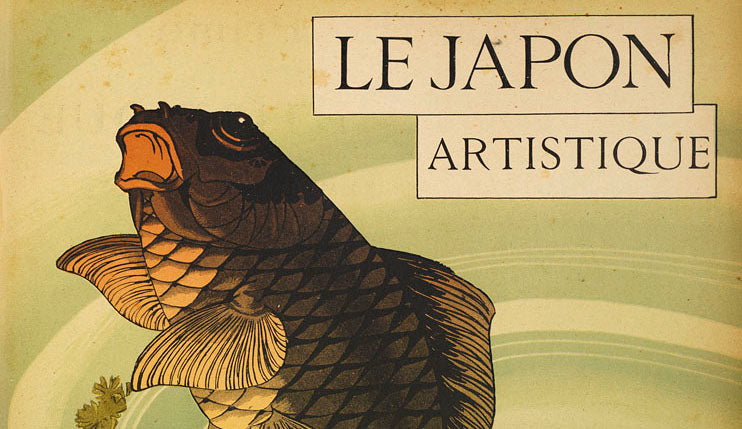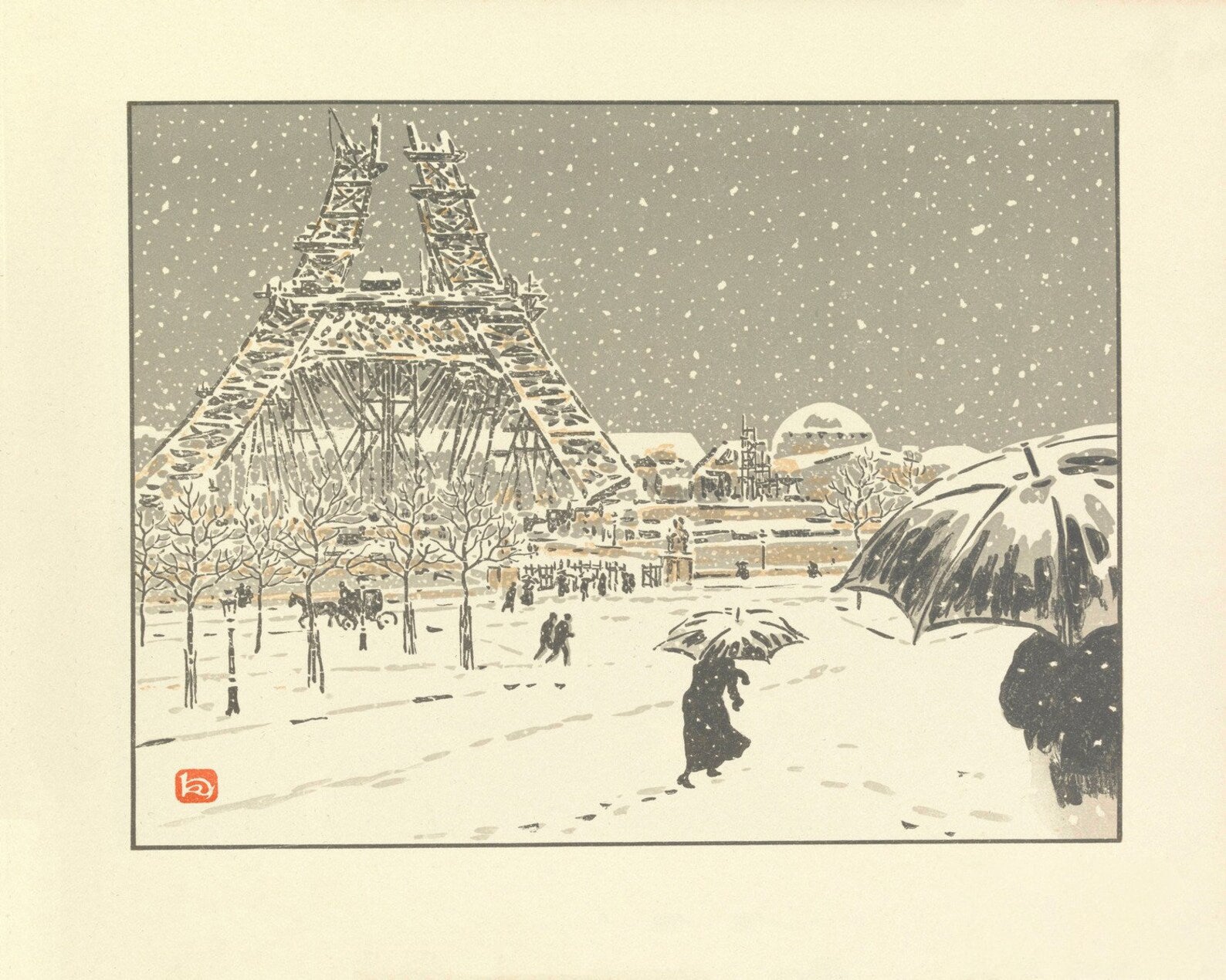Henri Rivière était une figure clé du mouvement Japonisme, qui a vu une profonde influence de l'esthétique japonaise sur l'art européen à la fin du XIXe siècle. Ses œuvres reflètent non seulement cet échange interculturel, mais illustrent également comment il a adapté les techniques japonaises traditionnelles pour créer une voix artistique unique.

Jeunesse et développement artistique
Né à Paris en 1864, Rivière a commencé son parcours artistique sous la direction d'Emile Bin. Sa découverte de l'art japonais s'est faite grâce à son engagement dans la scène du cabaret au Chat Noir, où il a contribué à Le Japon Artistique, une publication qui célébrait l'esthétique japonaise. Cette expérience a éveillé sa passion pour la gravure sur bois japonaise, le conduisant à expérimenter ce médium aux côtés de l'artiste Auguste Louis-Lepère.

Le Japon artistique, documents d'art et d'industrie, n° 20, 1889
Œuvres majeures et influence
Trente-six vues de la tour Eiffel
La série la plus remarquable de Rivière, Les Trente-six vues de la Tour Eiffel (Trente-six vues de la tour Eiffel), fait directement référence à l'iconique Katsushika Hokusai Trente-six vues du mont Fuji. Créée entre 1888 et 1902, cette série lithographique met en valeur la fascination de Rivière pour la modernité et la beauté spatiale, à l'instar de la célébration de la nature par Hokusai. Rivière a utilisé une palette de couleurs sobres rappelant la tradition ukiyo-e tirages, capturant la présence monumentale de la Tour Eiffel contre la silhouette parisienne.

Trente-six vues de la tour Eiffel, par Henri Rivière, 1888-1902
Matin brumeux à Loguivy
Une autre œuvre importante est Matin brumeux à Loguivy, qui illustre les premières expérimentations de Rivière avec les estampes sur bois en couleur utilisant des méthodes japonaises. Cette œuvre reflète sa capacité à fusionner les thèmes paysagers occidentaux avec les techniques de composition japonaises, mettant l'accent sur l'atmosphère et l'ambiance à travers la gradation des couleurs.

Matin brumeux à Loguivy, lithographie en couleur par Henri Rivière, 1903
Techniques et innovations
L'approche de Rivière consistait non seulement à adopter l'esthétique japonaise, mais aussi à innover en son sein. Il a créé un système de lithographie en couleur qui permettait des dégradés subtils auparavant inaccessibles dans la gravure occidentale. Cette avancée technique lui a permis de produire des œuvres qui faisaient écho aux zones plates de couleur et aux compositions asymétriques caractéristiques des estampes japonaises.
Influence sur l'art occidental
Les œuvres de Rivière ont contribué de manière significative au mouvement plus large du japonisme, influençant des contemporains tels que Vincent van Gogh et Paul Gauguin. Ses adaptations des styles japonais ont aidé à ouvrir la voie à de nouveaux mouvements artistiques en Europe, notamment l'impressionnisme et l'Art nouveau. L'interaction entre les estampes de Rivière et les artistes japonais ultérieurs comme Hasui Kawase illustre une relation réciproque dans l'inspiration artistique, renforçant ainsi son rôle de conduit culturel entre l'Est et l'Ouest.

Lune de printemps à la plage de Ninomiya par Hasui Kawase, 1931
Conclusion
L'héritage d'Henri Rivière réside dans sa capacité à synthétiser l'esthétique japonaise avec les traditions artistiques occidentales. Ses techniques innovantes et ses explorations thématiques ont non seulement enrichi son propre travail, mais ont également joué un rôle crucial dans la définition de la trajectoire de l'art moderne. En examinant l'œuvre de Rivière, nous obtenons un aperçu de l'échange dynamique entre les cultures qui a défini le mouvement du japonisme et son impact durable sur l'art occidental.




Laissez un commentaire
Ce site est protégé par hCaptcha, et la Politique de confidentialité et les Conditions de service de hCaptcha s’appliquent.